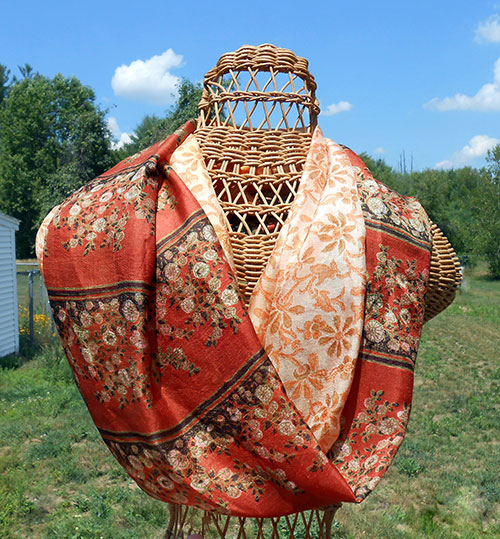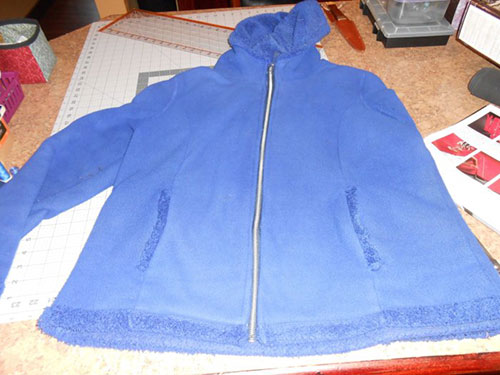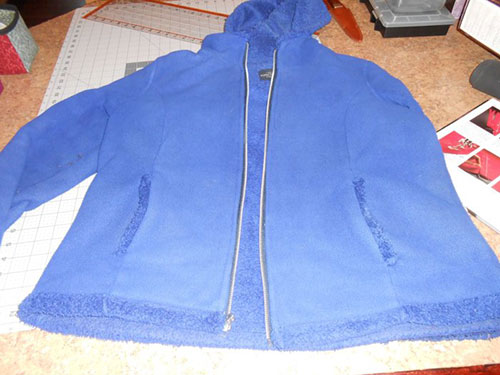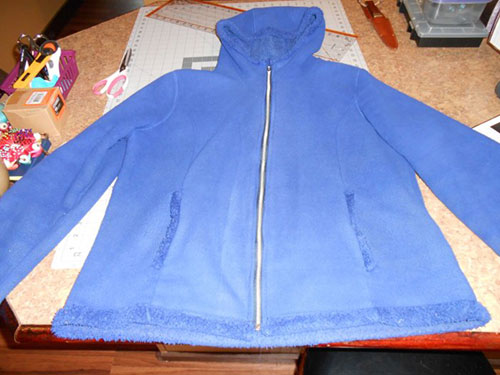How to Replace a Broken Zipper in a Jacket
Don't you hate it when a zipper breaks, making a jacket unwearable? Luckily, it's not that difficult to replace a broken zipper if you have the right tools. I'm going to walk you through choosing the right kind of zipper, holding it in place, and sewing it in. I'm going to show you how to replace a broken zipper with a sewing machine, but you can sew this by hand as well.
Disclosure: This post contains affiliate links, which means I may receive a percentage if you make a purchase using these links. This won't cost anything extra to you. I only link to things I like and use, and the proceeds help me to run this blog. Thank you for supporting me!
Materials used:
Getting the right kind of zipper
I think this is the trickiest part. There are so many different kinds of zippers! You'll want to get a separating zipper for your jacket. This means it opens up at the bottom, so you can completely separate the two sides of your jacket. If you get a non-separating zipper, it's not the end of the world, but you'll have to put your jacket on over your head instead of opening it up.
Next, you want to look for a zipper that is exactly the same length as your old zipper. If you can't find that, get one that's longer than your current zipper. If you do this, you need to get a zipper with metal teeth, rather than a nylon/plastic zipper. There are a few ways of shortening a zipper (see this tutorial from Craftsy), but you always shorten a nylon/plastic zipper from the bottom by sewing a few stitches over the teeth, creating a new stop for the zipper pull. Now you'll run into the previous problem of needing to put the jacket on over your head because it doesn't open up. With a metal zipper, you can shorten it from the top.
Getting the right size zipper
Zippers come in various sizes, ranging from 1-10 (smaller number = smaller zipper). These numbers refer to the width (in millimeters) of the teeth on the zipper coil. Because you're getting a separating zipper, it will almost certainly be the right size for a jacket, since that is generally what separating zippers are used for. However, double check the size just to be sure. You want one in the 5-7 range.
How to replace a broken zipper
First, remove the old zipper with your stitch ripper. There will probably be two rows of stitching holding it on each side.
On my jacket, the zipper was also holding the lining to the outside of the jacket. I tried just folding both layers over and adding the new zipper to the raw edge, but the layers were too slippery, and the zipper ended up being very uneven. So I folded the edge down and stitched it before adding the new zipper. The construction of your jacket may differ, so do what works best for you.
Keep the zipper zipped up for now. Use your wonder tape (double sided tape that's safe to sew through and dissolves in the wash) or fabric-safe glue to attach it to your jacket, leaving about 1/8" between the side of the jacket and the zipper teeth. You can also pin the zipper to your jacket. I had trouble getting through so many thick layers with pins, so I taped mine. I think I'll try fabric glue next time, though. I used small pieces of wonder tape, so I could re-position the jacket as necessary. Since the fleece was a little stretchy, it moved around a bit while I was sewing. I think fabric glue might have kept it in place better.
Once you've taped/glued/pinned the zipper in place, check to see that the bottom and top edges of the jacket are matched up. Match up any seams/pockets as well.
Now unzip your zipper. It will be much easier to sew while it's open, but it's much easier to make sure everything is matched up while it's zipped.
At first, I tried using a zipper foot, but the seam on the edge of the jacket was bulky, so I ended up using an open toe embroidery foot instead. I kept the bulky seam in the middle, and the zipper to the side of the presser foot. This worked pretty well to keep the spacing even.
As I mentioned, the fleece stretched a little bit while sewing, so the zipper has a few small ripples, but overall, it's not that noticeable, and the jacket can be worn again!















